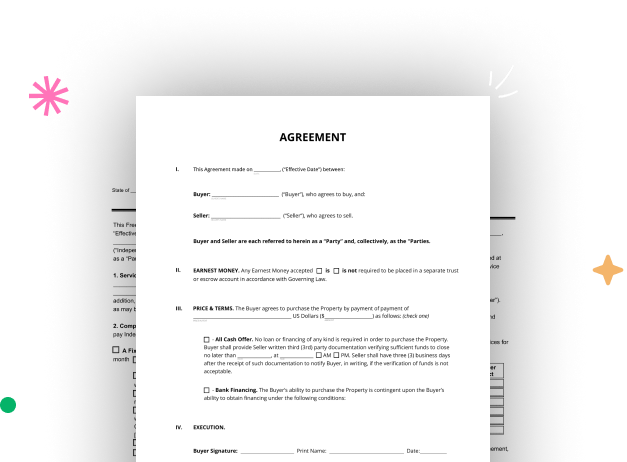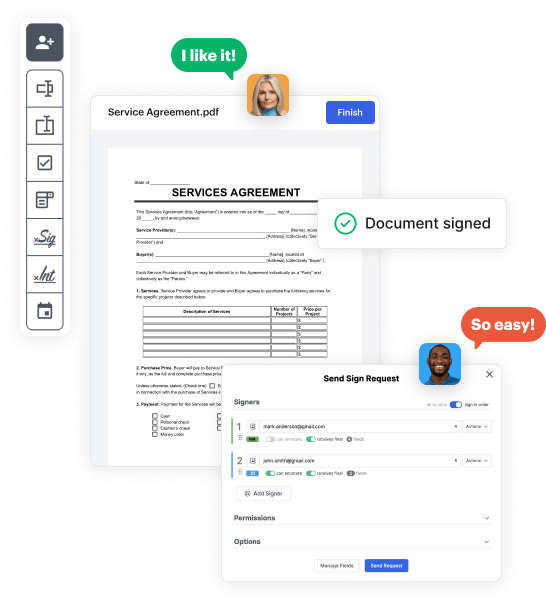

First, log in to your DocHub account. If you don't have one, you can easily sign up for free.
Once logged in, access your dashboard. This is your primary hub for all document-based tasks.
In your dashboard, choose New Document in the upper left corner. Pick Create Blank Document to create the United States Landlord Tenant Form from a blank slate.
Add numerous elements like text boxes, images, signature fields, and other fields to your form and assign these fields to certain individuals as needed.
Customize your form by inserting guidelines or any other necessary information utilizing the text feature.
Thoroughly examine your created United States Landlord Tenant Form for any mistakes or essential adjustments. Utilize DocHub's editing tools to polish your document.
After finalizing, save your file. You can choose to save it within DocHub, export it to various storage services, or send it via a link or email.